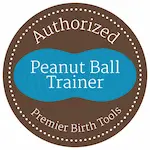The AAP Breastfeeding and the Use of Human Milk policy states a mother should exclusively breastfeed for 6 months, and continue breastfeeding as baby eats family foods for a year of age.
The AAP supports continued breastfeeding for as long as mutually desired by mom and baby.
Benefits of Breastfeeding
The American Academy of Pediatrics has amassed a large number of studies that support long term breastfeeding. Current findings suggest it not only has health benefits for the baby, but also for mom and the environment. Choosing to breastfeed also benefits the environment. It requires less tin or plastic containers in the landfill, less diesel trucks transporting product across the country, and less leveling of forests for cattle to graze to support the dairy industry.
For Baby
- Reduces obesity
- Lessens risk of viral, bacterial, and allergenic infections or diseases
- Eases pain
For Mom
- Lowers risk of breast and ovarian cancers and osteoporosis,
- Promotes weight loss when coupled with a healthy diet,



Your Personal journey
Breastfeeding can look as different to each woman as there are women on the planet.
While we are meant to feed our babies from our bodies. We are called “Mammals” – i.e mammary tissue, as a classification of higher vertebrate animals.
Things that affect breastfeeding outcomes
that involve our physical natures, our psychological state at time of pregnancy and birth, and our social bonds and surrounding influences i.e. society and our demographic and geographic generation at time of birth.
Many mothers, despite their desire to breastfeed, do not meet their breastfeeding goals.



Education, Motivation and Support is the key to success
Consider choosing a midwife for your maternity care. Midwives explore body, mind and soul aspects in your life that may influence your health postnatally. Seek information and resources to maximize success. Go to a breastfeeding class and attending a breastfeeding support group while still pregnant. Develop a prenatal plan based on your personal lifestyle
Is breastfeeding a reliable form of birth control?
Breastfeeding in many other parts of the world is considered a very effective form of birth control, but is not so in the US.
Everything we know about breastfeeding tells us it works best without schedules, without artificial nipples and without short maternity leaves.
Since our western culture tends to be more schedule-oriented, go-go-go type of society, breastfeeding isn’t considered the best way to ensure child spacing and subsequent pregnancies.
Lactational Amenorrea Method (LAM)
LAM is most effective when the baby is exclusively breastfed around the clock for first six months. Exclusive breastfeeding in this case means feeding your baby only at the breast (no bottles, formula, or pacifiers).
When you resumes menstruating, LAM method will not be effective.
Once solid foods are introduced, you should not rely on LAM protection.
Will breastfeeding help me lose weight?
If weight loss is important to you while on your nursing journey, eat as healthy and fresh as you can, stay very well hydrated and follow your care providers recommendations for exercise (dependent on how you delivered) before you begin your exercise routine. When you are released to exercise by your care giver, always start slowly – too much too soon could affect your milk supply significantly.
What is the best way to wean my baby or toddler?
In a word – SLOWLY, meaning – over time (a couple weeks, not days).
When you wean over time, involution of the milk secreting cells is much less dramatic regardless if its done in the early stages of building your supply or when nursing a toddler and any age in between.
To wean abruptly and go cold turkey is to put yourself at a high risk for engorgement and/or plugged ducts and/or mastitis (a breast infection). Each of those problems is painful enough on its own, and also not necessary no matter the reason for weaning.

The weaning process
You can gradually continue to shorten feedings/pumpings so that some milk is left in the breast following the session. A hormone called FIL (feedback inhibitor of lactation) will do its intended job and tell the brain that extra milk is no longer needed. This is done over a few weeks time, not a few days time.
You can also cut one feeding/pumping session out of the normal routine, and continue to keep that session out of the routine for 4-7 days, then cut out another feeding/pumping session. This can still cause discomfort and engorgement, and isn’t advised over the former weaning suggestion unless you are weaning an older toddler, one whom has been sleeping through the night and eating a variety of foods each day. In this instance, your supply will be more amenable to involution by cutting out an entire session.
For both of the above weaning-over-time suggestions, the mother can use ice for the discomfort, and ask your caregiver if its safe for you to use anti-inflammatory medication to ease any pain with inflammation that may occur.
You can also discuss with an IBCLC how to appropriately use cabbage leaves to aid the discomfort that may happen with weaning. It works really well and can be helpful with this process.
Resources
Breastfeeding and the Use of Human Milk
La Leche League is a local chapter of the international organization, which focuses on helping and educating breastfeeding mothers.
Consult Your Midwife
© 2025 San Diego County Midwives
San Diego County Midwives have either authored or reviewed and approved the content on this website.
Disclaimer of Medical Advice: All users of this website are responsible for their own medical care, treatment, and oversight. All of the content provided on the website is for informational purposes only and does not constitute the providing of medical advice. It is not intended to be a substitute for independent professional medical judgment, advice, diagnosis, or treatment.
Privacy Policy | Terms of Use | Sitemap | Accessibility Statement






